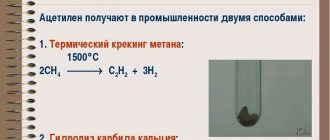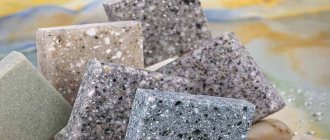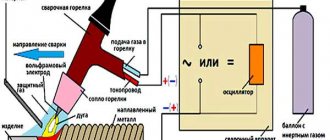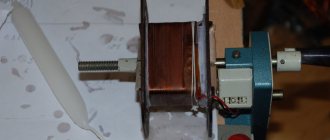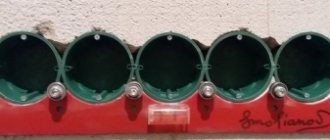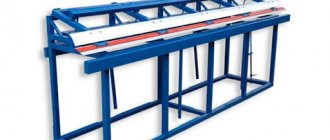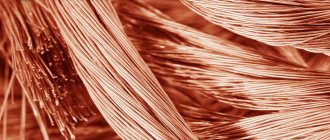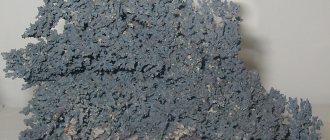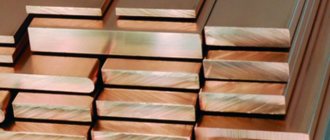Copper (lat. Cuprum) is a chemical element of group I of the periodic system of Mendeleev (atomic number 29, atomic mass 63.546). In compounds, copper usually exhibits oxidation states +1 and +2; a few trivalent copper compounds are also known. The most important copper compounds: oxides Cu2O, CuO, Cu2O3; hydroxide Cu(OH)2, nitrate Cu(NO3)2.3H2O, sulfide CuS, sulfate (copper sulfate) CuSO4.5H2O, carbonate CuCO3.Cu(OH)2, chloride CuCl2.2H2O.
Copper is one of the seven metals known since ancient times. The transition period from the Stone to the Bronze Age (4th - 3rd millennium BC) was called the Copper Age or Chalcolithic (from the Greek chalkos - copper and lithos - stone) or Chalcolithic (from the Latin aeneus - copper and Greek lithos - stone) . Copper tools appeared during this period. It is known that copper tools were used during the construction of the Cheops pyramid.
Pure copper is a malleable and soft metal of a reddish color, pink when fractured, in places with brown and mottled tarnish, heavy (density 8.93 g/cm3), an excellent conductor of heat and electricity, second in this regard only to silver (melting point 1083oC). Copper is easily drawn into wire and rolled into thin sheets, but has relatively little activity. In dry air and oxygen under normal conditions, copper does not oxidize. But it reacts quite easily: already at room temperature it forms CuCl2 chloride with halogens, for example with wet chlorine; when heated with sulfur it forms Cu2S sulfide, with selenium. But copper does not interact with hydrogen, carbon and nitrogen even at high temperatures. Acids that do not have oxidizing properties do not act on copper, for example, hydrochloric and dilute sulfuric acids. But in the presence of atmospheric oxygen, copper dissolves in these acids to form the corresponding salts:
2Cu + 4HCl + O2 = 2CuCl2 + 2H2O.
In an atmosphere containing CO2, H2O vapors, etc., it becomes covered with patina - a greenish film of basic carbonate (Cu2(OH)2CO3)), a toxic substance.
Copper is found in more than 170 minerals, of which only 17 are important for industry, including: bornite (variegated copper ore - Cu5FeS4), chalcopyrite (copper pyrite - CuFeS2), chalcocite (copper luster - Cu2S), covellite (CuS), malachite (Cu2(OH)2CO3). Native copper is also found
Characteristics of copper
- Copper density - 8.93*103kg/m3;
- Specific gravity of copper - 8.93 g/cm3;
- The specific heat capacity of copper at 20oC is 0.094 cal/deg;
- The melting point of copper is 1083oC;
- Specific heat of fusion of copper - 42 cal/g;
- The boiling point of copper is 2600oC;
- Linear expansion coefficient of copper
- (at a temperature of about 20oC) - 16.7 * 106 (1/deg);
- Thermal conductivity coefficient of copper is 335 kcal/m*hour*deg;
- Copper resistivity at 20oC - 0.0167 Ohm*mm2/m;
Copper connections
Copper (I) oxide Cu2O3 and cuprous oxide (I) Cu2O , like other copper (I) compounds, are less stable than copper (II) compounds. Copper (I) oxide, or cuprous oxide Cu2O, occurs naturally as the mineral cuprite. In addition, it can be obtained as a precipitate of red copper(I) oxide by heating a solution of a copper(II) salt and an alkali in the presence of a strong reducing agent.
Copper(II) oxide, or copper oxide, CuO is a black substance found in nature (for example, as the mineral tenerite). It is obtained by calcination of copper (II) hydroxycarbonate (CuOH)2CO3 or copper (II) nitrate Cu(NO2)2. Copper(II) oxide is a good oxidizing agent.
Copper (II) hydroxide Cu(OH)2 precipitates from solutions of copper (II) salts under the action of alkalis in the form of a blue gelatinous mass. Even with low heating, even under water, it decomposes, turning into black copper (II) oxide. Copper(II) hydroxide is a very weak base. Therefore, solutions of copper (II) salts in most cases have an acidic reaction, and with weak acids copper forms basic salts.
Copper (II) sulfate CuSO4 in the anhydrous state is a white powder that turns blue when it absorbs water. Therefore, it is used to detect traces of moisture in organic liquids. An aqueous solution of copper sulfate has a characteristic blue-blue color. This color is characteristic of hydrated [Cu(H2O)4]2+ ions, therefore all dilute solutions of copper (II) salts have the same color, unless they contain any colored anions. From aqueous solutions, copper sulfate crystallizes with five molecules of water, forming transparent blue crystals of copper sulfate. Copper sulfate is used for electrolytic coating of metals with copper, for the preparation of mineral paints, and also as a starting material in the preparation of other copper compounds. In agriculture, a diluted solution of copper sulfate is used to spray plants and treat grain before sowing to destroy spores of harmful fungi.
Copper (II) chloride CuCl2. 2H2O. Forms dark green crystals, easily soluble in water. Very concentrated solutions of copper (II) chloride are green, diluted solutions are blue-blue.
Copper (II) nitrate Cu(NO3)2.3H2O. It is obtained by dissolving copper in nitric acid. When heated, blue copper nitrate crystals first lose water and then easily decompose, releasing oxygen and brown nitrogen dioxide, turning into copper (II) oxide.
Copper (II) hydroxycarbonate (CuOH)2CO3. It occurs naturally in the form of the mineral malachite, which has a beautiful emerald green color. It is artificially prepared by the action of Na2CO3 on solutions of copper (II) salts. 2CuSO4 + 2Na2CO3 + H2O = (CuOH)2CO3v + 2Na2SO4 + CO2^ Used to obtain copper (II) chloride, for the preparation of blue and green mineral paints, as well as in pyrotechnics.
Copper (II) acetate Cu (CH3COO)2.H2O. It is obtained by treating copper metal or copper(II) oxide with acetic acid. Usually it is a mixture of basic salts of various compositions and colors (green and blue-green). Under the name verdigris, it is used to prepare oil paint.
Complex copper compounds are formed as a result of the combination of doubly charged copper ions with ammonia molecules. A variety of mineral paints are obtained from copper salts. All copper salts are poisonous. Therefore, to avoid the formation of copper salts, copper utensils are coated on the inside with a layer of tin (tinned).
Basic properties
Smelting copper from ore
Copper, as a metal, is obtained by smelting ore; in nature it is difficult to find pure nuggets; mainly enrichment and extraction is carried out from:
- chalcocite ore, in which the copper content is about 80%, this type is often called copper luster;
- Bronite ore, here the metal content is up to 65%
- covellite ore - up to 64%.
In terms of its physical properties, copper is a red-colored metal; a pink tint may be present in the section; it is classified as a heavy metal because it has a high density.
A distinctive characteristic is electrical conductivity. Due to this, the metal is widely used in the manufacture of cables and electrical wires. In this indicator, copper is second only to silver; in addition, there are a number of other physical characteristics:
- hardness - on the Brindel scale equals 35 kgf/mm²;
- elasticity - 132000 MN/m²;
- linear thermal expansion - 0.00000017 units;
- relative elongation - 60%;
- melting point - 1083 ºС;
- boiling point - 2600 ºС;
- thermal conductivity coefficient - 335 kcal/m*h*deg.
The main properties of copper include the elastic modulus, which is calculated by various methods:
| Copper grade | Shear modulus | Young's modulus | Poisson's ratio |
| Cold drawn copper | 4900 kg/mm² | 13000 kg/mm² | — |
| Rolled copper | 4000 | 11000 kg/mm² | 0,31 — 0,34 |
| Cast copper | — | 8400 | — |
The shear modulus is useful to know in the production of materials for the construction industry - it is a value that characterizes the degree of resistance to shear and deformation under the influence of various loads. The modulus calculated using Young's method shows how the metal will behave under uniaxial tension. The shear modulus characterizes the response of a metal to shear load. Poisson's ratio shows how a material behaves under uniform compression.
Development of mines for the extraction of copper and other metals
The chemical properties of copper describe the combination with other substances into alloys and possible reactions to an acidic environment. The most significant characteristic is oxidation. This process actively manifests itself during heating; already at a temperature of 375 ºC, copper oxide begins to form, or scale as it is called, which can affect the conductive functions of the metal and reduce them.
When copper reacts with a solution of an iron salt, it turns into a liquid state. This method is used to remove copper coating on various products.
Long stay in water causes cuprite
When copper is exposed to a humid environment for a long time, cuprite, a greenish coating, forms on its surface. This property of copper is taken into account when using metal to cover roofs. It is noteworthy that cuprite performs a protective function; the metal underneath does not deteriorate at all, even for a hundred years. The only opponents of copper roofs are environmentalists. They explain their position by the fact that when copper cuprite is washed off by rainwater into the soil or water bodies, it pollutes it with its toxins, which especially has a detrimental effect on microorganisms living in rivers and lakes. But to solve this problem, builders use drainpipes made of a special metal, which absorbs copper particles and accumulates them, while the water flows free of toxins.
Copper sulfate is another result of chemical action on metal. This substance is actively used by agronomists to fertilize the soil and stimulate the growth of various crops. However, uncontrolled use of vitriol can also have a detrimental effect on the environment. Toxins penetrate deep into the layers of the earth and accumulate in groundwater.
Copper production
Copper is mined from oxide and sulfide ores. 80% of all mined copper is smelted from sulfide ores. Typically, copper ores contain a lot of gangue. Therefore, a beneficiation process is used to obtain copper. Copper is obtained by smelting it from sulfide ores. The process consists of a number of operations: roasting, smelting, converting, fire and electrolytic refining. During the firing process, most of the impurity sulfides are converted into oxides. Thus, the main impurity of most copper ores, pyrite FeS2, turns into Fe2O3. The gases produced during roasting contain CO2, which is used to produce sulfuric acid. The resulting oxides of iron, zinc and other impurities during the firing process are separated in the form of slag during melting. Liquid copper matte (Cu2S with an admixture of FeS) enters the converter, where air is blown through it. During conversion, sulfur dioxide is released and crude or raw copper is obtained. To extract valuable (Au, Ag, Te, etc.) and to remove harmful impurities, blister copper is first subjected to fire and then electrolytic refining. During fire refining, liquid copper is saturated with oxygen. In this case, impurities of iron, zinc and cobalt are oxidized, turn into slag and are removed. And copper is poured into molds. The resulting castings serve as anodes during electrolytic refining.
The main component of the solution during electrolytic refining is copper sulfate - the most common and cheapest copper salt. To increase the low electrical conductivity of copper sulfate, sulfuric acid is added to the electrolyte. And to obtain a compact copper deposit, a small amount of additives is introduced into the solution. Metal impurities contained in crude (“blister”) copper can be divided into two groups.
- Fe, Zn, Ni, Co. These metals have significantly more negative electrode potentials than copper. Therefore, they anodicly dissolve together with copper, but are not deposited on the cathode, but accumulate in the electrolyte in the form of sulfates. Therefore, the electrolyte must be replaced periodically.
- Au, Ag, Pb, Sn. Noble metals (Au, Ag) do not undergo anodic dissolution, but during the process they settle at the anode, forming anode sludge together with other impurities, which is periodically removed. Tin and lead dissolve together with copper, but in the electrolyte they form poorly soluble compounds that precipitate and are also removed.
Copper alloys
Alloys that increase the strength and other properties of copper are obtained by introducing additives into it, such as zinc, tin, silicon, lead, aluminum, manganese, and nickel. More than 30% of copper is used for alloys.
Brasses are alloys of copper and zinc (copper from 60 to 90% and zinc from 40 to 10%) - stronger than copper and less susceptible to oxidation. When silicon and lead are added to brass, its anti-friction qualities increase; when tin, aluminum, manganese and nickel are added, its anti-corrosion resistance increases. Sheets and cast products are used in mechanical engineering, especially in chemical, optics and instrument making, and in the production of meshes for the pulp and paper industry.
Bronze. Previously, bronzes were alloys of copper (80-94%) and tin (20-6%). Currently, tin-free bronzes are produced, named after the main component after copper.
- Aluminum bronzes contain 5-11% aluminum and have high mechanical properties combined with anti-corrosion resistance.
- Lead bronzes containing 25-33% lead are used mainly for the manufacture of bearings operating at high pressures and high sliding speeds.
- Silicon bronzes containing 4-5% silicon are used as cheap substitutes for tin bronzes.
- Beryllium bronzes containing 1.8-2.3% beryllium are distinguished by hardness after hardening and high elasticity. They are used for the manufacture of springs and spring products.
- Cadmium bronzes - copper alloys with a small amount of cadmium (up to 1%) - are used in the production of trolley wires, for the manufacture of fittings for water and gas lines and in mechanical engineering.
Solders are alloys of non-ferrous metals used in soldering to produce a monolithic soldered seam. Among hard solders, copper-silver alloy is known (44.5-45.5% Ag; 29-31% Cu; the rest is zinc).
Areas of copper use
Due to its mechanical properties, copper has found wide application in various industries, but most often it can be found as an integral part of electrical wires, in heating and air cooling systems, in the production of computer equipment, and heat exchangers.
Industry uses thousands of tons of copper annually
In construction, this metal is used in the manufacture of various structures; the main advantage here is the low volumetric weight of copper. As noted above, non-ferrous metal has found wide application in roofing work, as well as in the manufacture of pipes. The resulting pipes are lightweight and can be transformed, which is especially important when designing water supply and sewerage systems.
The main part of the production of copper products is wire used as a core for electrical or communication cables. Due to the main characteristic of copper - electrical conductivity, it has a high resistance to current, and also has unique magnetic properties - unlike other metals, its particles do not react to a magnet, which sometimes complicates the process of cleaning it. It is worth noting that almost all production of products is based on the processing of secondary raw materials; ore is used extremely rarely.
